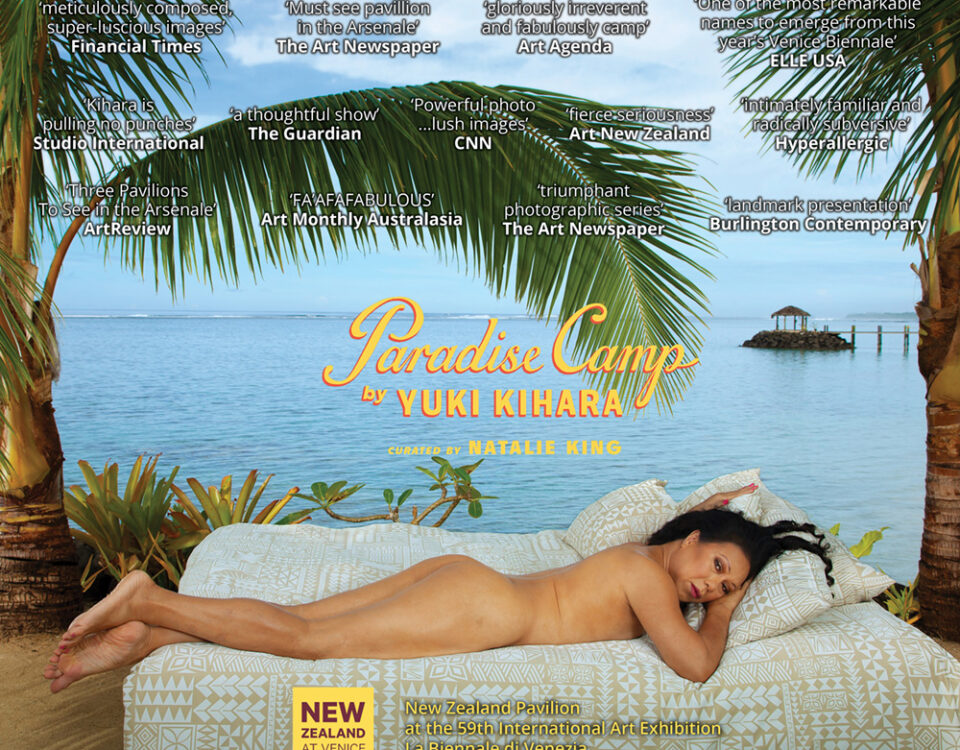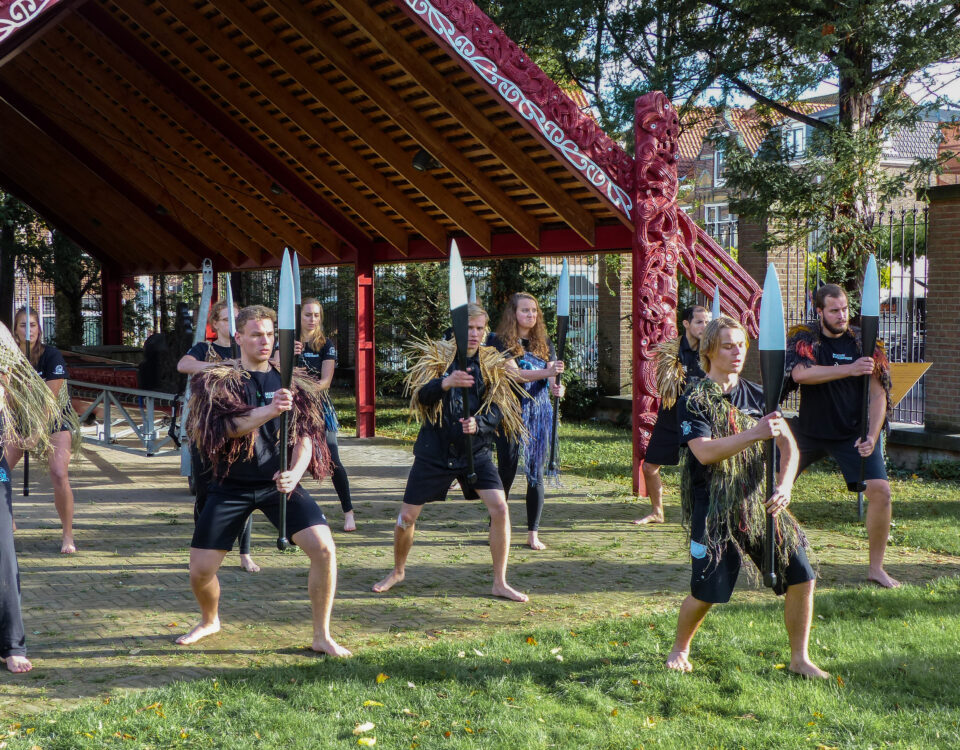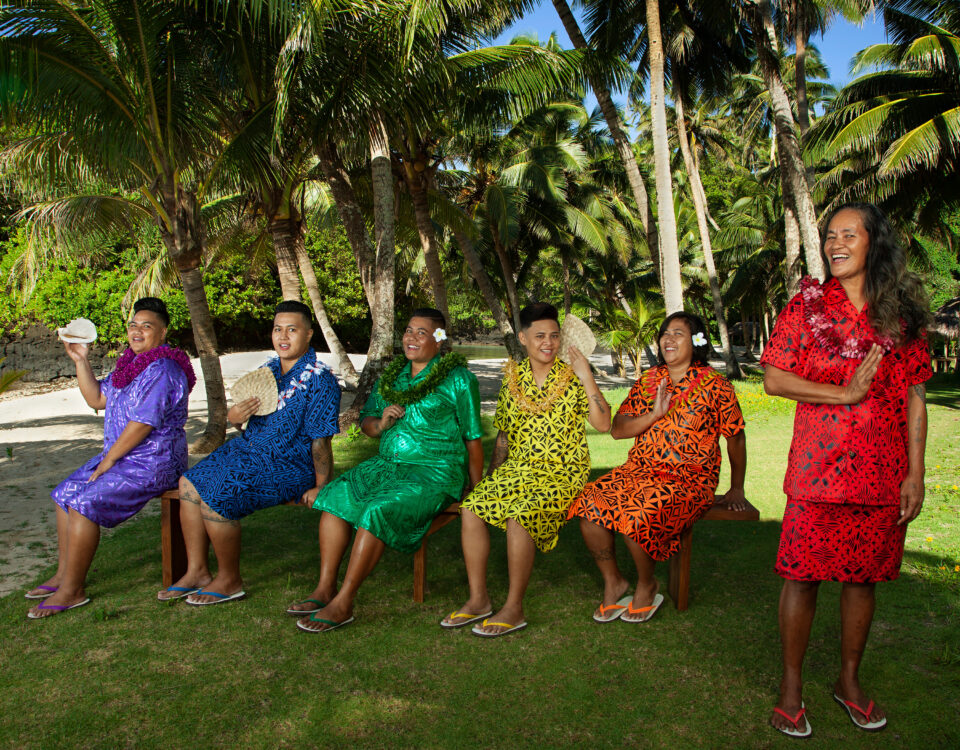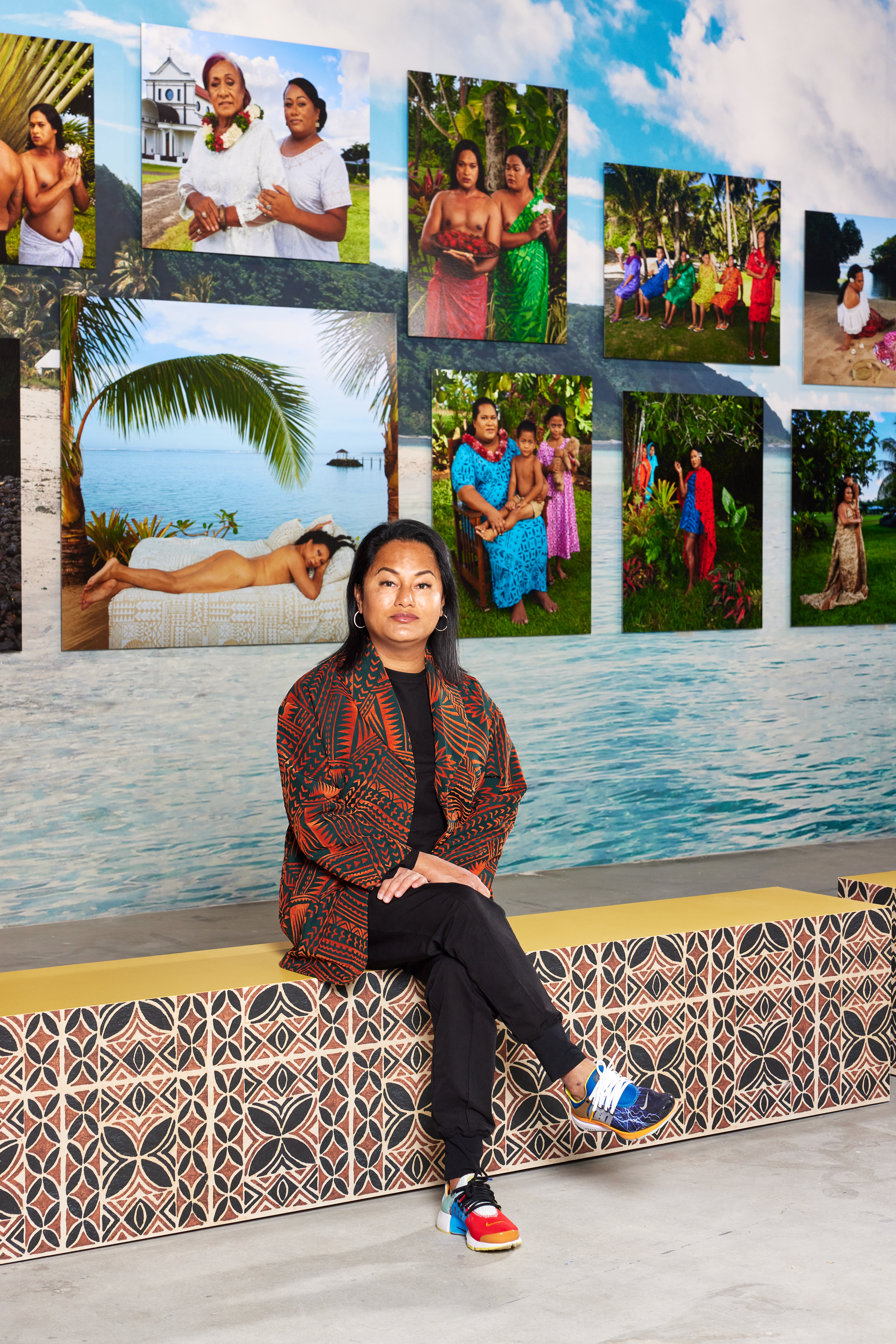
Contemporary HUM: An interview with Yuki Kihara
June 30, 2022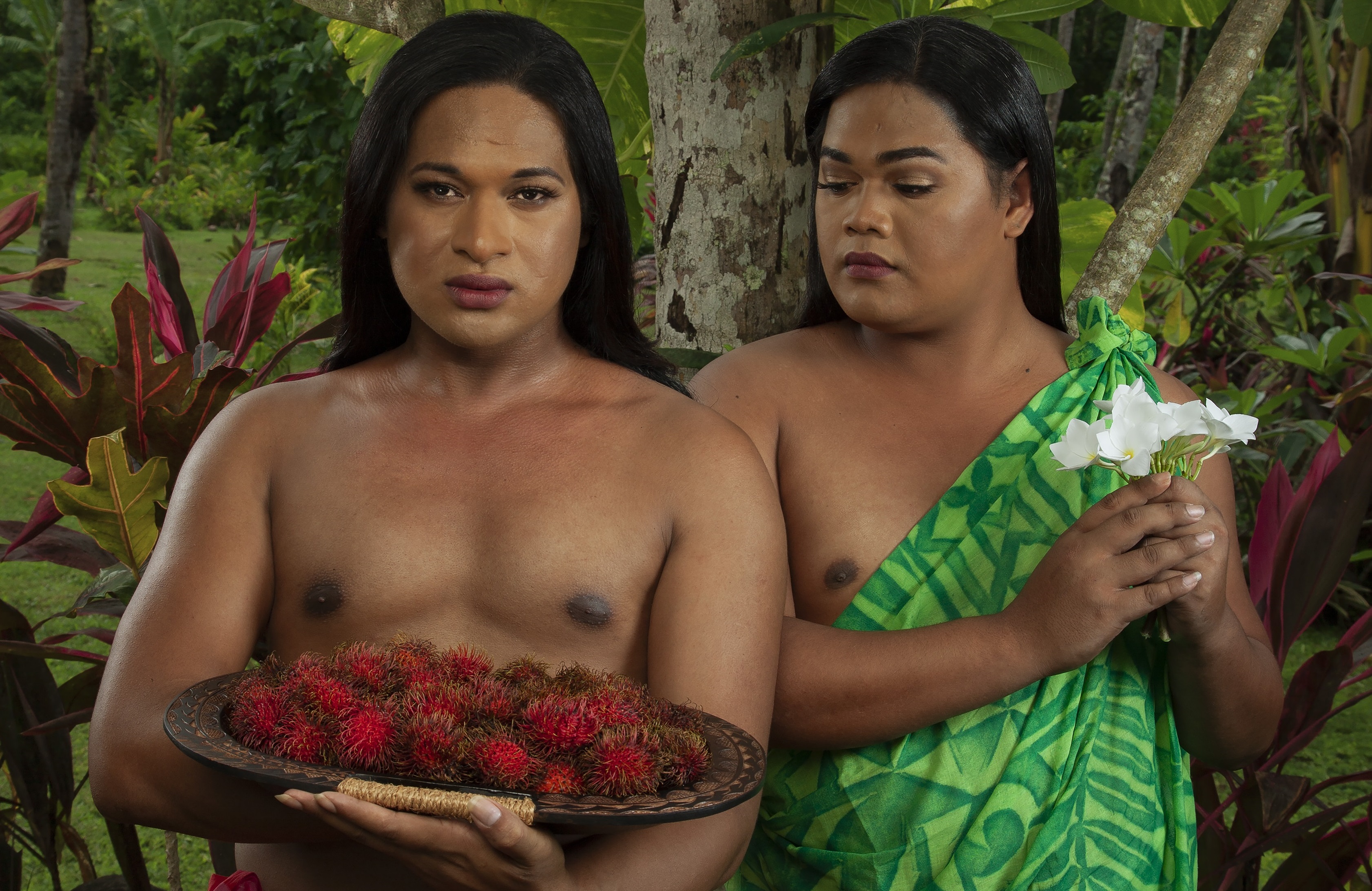
Metro: Reclaiming Paradise
June 30, 2022Contemporary Hum: An interview with the curators of Paradise Camp
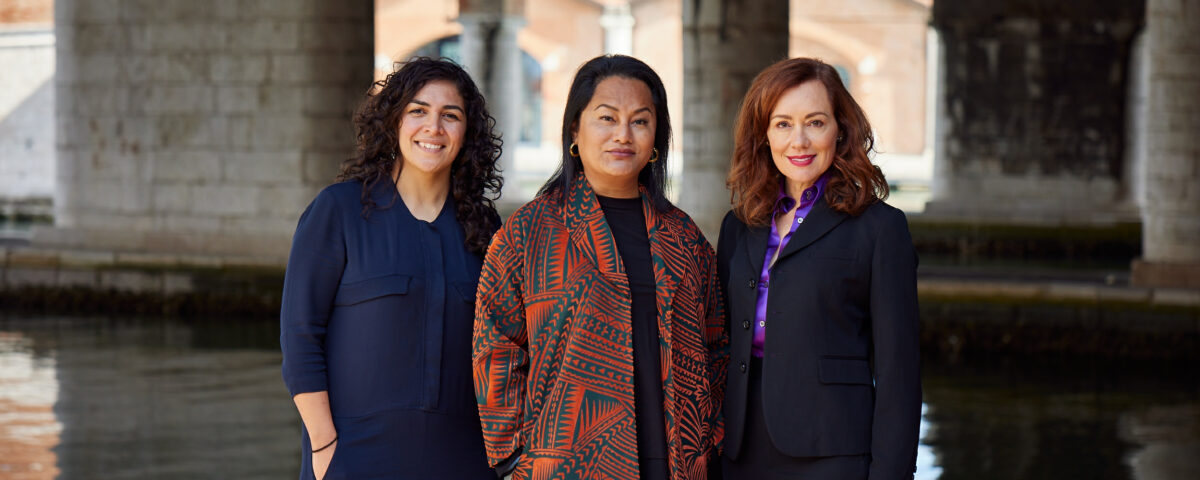
CONTEMPORARY HUM Natalie, you said that you went on-site to Sāmoa during the filming of Paradise Camp. Was that your first time there and first time meeting the local Fa‘afafine community with Yuki Kihara? How was this experience and, in contrast, what is it like to be in Venice now? How are these international audiences reacting to the work, which is so contextual, so based in local experiences and communities?
NATALIE KING In March 2020, I went to Sāmoa to witness the final phase of Yuki’s photoshoot for Paradise Camp. It was my first time in Sāmoa, and it was quite a culture shock for me. Yuki had selected very specific locations for her photographs, including villages, plantations, waterfalls and a fale (house) to tell her story.
There was a cast of close to 100 people, so it was a very elaborate production. Yuki works like a cinematographer, so choosing a location, cast and crew, as well as lighting. The way that she worked was specific and purposeful. And I felt really privileged to be able to watch. It’s always a joy, and quite rare, for a curator. I guess it was like being in a live studio when Yuki was on location, making the work in situ.
I also got to spend time with the Fa‘afafine community. Every night we had dinner with Yuki’s friends. And they told us naughty stories, funny stories, as well as harrowing stories about discrimination and being rejected by family. But also stories of hope, their lavish pageants, and I just absolutely loved being there.
In retrospect, it was a miracle, because it was two weeks before lockdown. So, in fact, if Yuki hadn’t had such a carefully planned Paradise Camp shoot, I don’t know how we would have made the work. But fast forward to now, here we are at the Venice Biennale, presenting Yuki’s work.
There’s been a tremendous response, even though there’s such geographical distance between Sāmoa, the Pacific and Venice. Yuki’s looking at issues that are pertinent—small-island ecologies, environment crises, decolonisation and intersectionality. These are issues that affect all of us, and especially Venice, which is a fragile lagoon, one that is hugely impacted by tourism and by the tides in acqua alta.
HUM A question increasingly raised, not just at this Biennale, but also in recent years, is who is speaking for whom? Whose voices and stories are being represented? This is also why Yuki started the Firsts Solidarity Network. It shows, hopefully, not just a trend in the contemporary art sector but a sincere desire to bring more opportunities for marginalised perspectives and more diversified representation of society.
Paradise Camp has a curator and assistant curator with different backgrounds and cultural/national affiliations. Can you tell us more about this decision and how you curate a project that falls outside of your own lived experience? What were your roles and how did you work together to support the artist, to make a complementary team and bring your own situated experiences, knowledge, networks, etc., to the table?
IOANA GORDON-SMITH I’m Sāmoan but was born and raised in Aotearoa, and so a lot of my experience is within the Pacific Arts community there, which is how I know Yuki in the first place. I don’t remember how we first met, but I’ve worked with her in the past. So we share a cultural background in New Zealand.
In terms of the limits of shared experience, I think that any discourse around decolonial politics or Indigenous knowledges that doesn’t also incorporate a challenge to heteronormative norms is an incomplete decolonial discourse. These are part of one shared, greater movement to challenge the colonial inheritance of gender, of sexuality, of identity. In terms of supporting someone who has faced different challenges to me, I think, ultimately, you have to be quite mindful of ensuring that someone can speak to their own experience without thrusting expectations upon them of what their varied experiences might be.
What I really enjoy about the exhibition is that there is a spectrum of stories and characteristics that come through. On the one hand, there is this identification of the histories that continue to impact Fa‘afafine. But on the other hand, you’ve also got this embrace of different personalities, especially, I think, through First Impressions. You’ve got the laughter, the tenderness, the cackling. You’ve got a group of women and Fa‘afafine that Yuki has empowered to represent themselves and share their own first impressions of Paul Gauguin, who stands as a figurehead for the colonial treatment of Pacific peoples.
Read the interview in full here on Contemporary Hum’s website.

